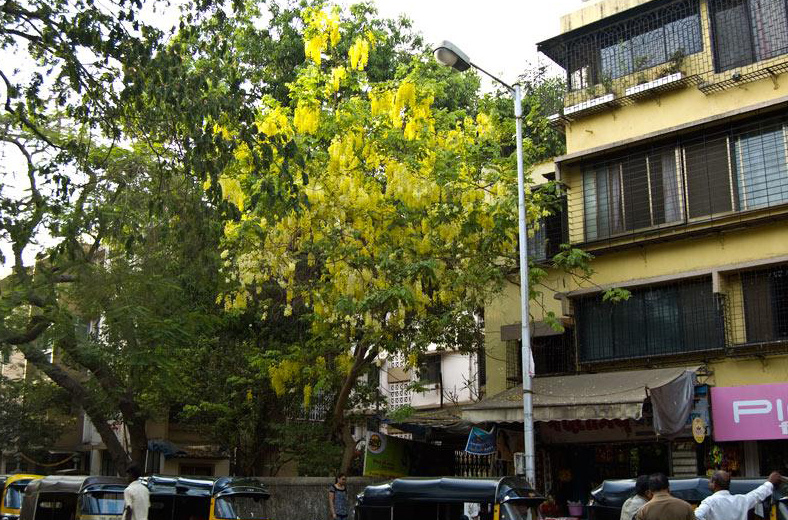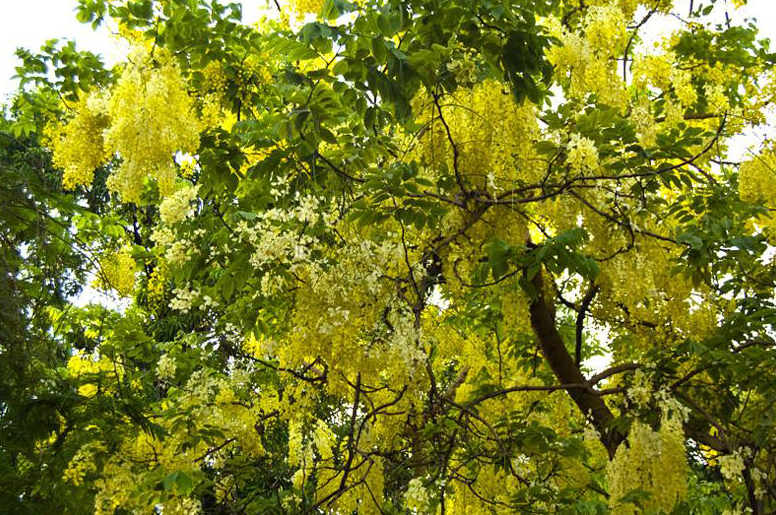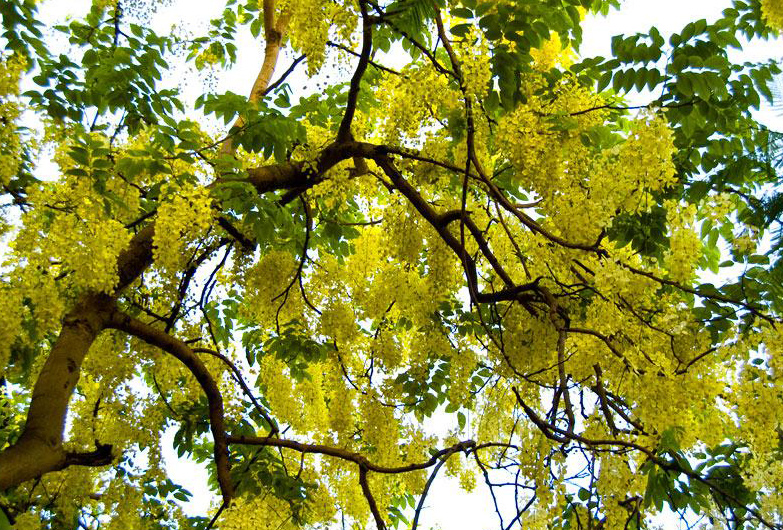Bahava…
Revival by
Bahava
Just when you think all is gone, there comes something to sooth your mind. With the passage of winter about a month back (Mumbai anyways doesn’t experience any cold whatsoever), when body starts sweating, sometimes not just body but even mind starts tiring. Man starts looking for something – movies, masti, party, outings – to rejuvenate himself. In an hour or two, he feels fresh and continues to remain fresh probably till next weekend. There are, however, some natural entities, natural phenomenon which, once experienced, will keep you fresh for much longer time.
Bahava (Cassia fistula ) and Gulmohar (Delonix regia) are such trees which, when seen in their full bloom, has a potential to enthrall many…they do so at least to me. My friend D. V. Gaykar aka Da Vi Ga has devoted many hours in their glorification by way of writing some high quality poems. I have always dreamt to see these 2 trees standing next to each other with their Yellow and Red bloom in my dream backyard. However, normally, when Bahava loses its bloom, Gulmohar starts blooming in a full swing. It is as if they care more for us than we care for them :)!!
Enjoy few images of fully bloomed Bahava taken yesterday during my visit along with friends D.V. Gaykar and Shwetal. I felt it was a perfect start of a Marathi New Year on a Gudhi Padwa Day :).
Cassia fistula is widely grown as an ornamental plant in tropical and subtropical areas. Also known as Golden Shower Tree, it blooms in spring; flowering is profuse, with trees being covered with yellow flora, with almost no leaf being seen. Not recommended for dry climates. Growth is best in full sun on well-drained soil; it is drought and salt tolerant, but will be damaged by even short spells of freezing weather. It can be subject to mildew, leaf spot and root diseases. (Ref – Wikipedia)
(Sometimes I get a feeling that the residents of this area are blessed 🙂)
In Ayurvedic medicine, Golden Shower Tree is known as aragvadha (“disease killer”). Its fruit pulp is used as mild laxative, against fevers, arthritis, vatavyadhi (nervous systemdiseases) , all kinds of rakta-pitta (bleeding, such as hematemesis or hemorrhages),as well as cardiac conditions and stomach problems such as acid reflux. The root is considered a very strong purgative, and self-medication or any use without medical supervision is strongly advised against in Ayurvedic texts. (Ref – Wikipedia)




Malayali calls this flower as “Kanikkonna”. its closely connects with the “Vishu” festival
Comment by Sasidharan Damodaran — September 6, 2010 @ 11:25 am
Hi Abhijit,
Just like you, even i am a BAHAVA and Gulmohar fan. We have these trees in the vicinity where we stay and the bloom in these times of year is mind-blowing. When you see these trees you have no words to express.. it keeps you spellbound.
I think that these trees should be planted everywhere. Just as you said, i has the potential to rejuvinate your mind. I have managed to get its ‘sheng’ this time and am planning to plant those seeds in various places this monsoon… of course i have to understand the science of planting and will have to plan well.
–Swapnil Save
Comment by Swapnil Save — April 22, 2013 @ 12:26 pm
Hi Abhijit / Swapnil,
Can you tell me the place in navimumbai (Ghansoli / Koparkhairane) or chembur or dadar, where you see these bahava trees ?
I need them for medicine purpose
NB
Comment by NB — July 13, 2014 @ 8:33 pm